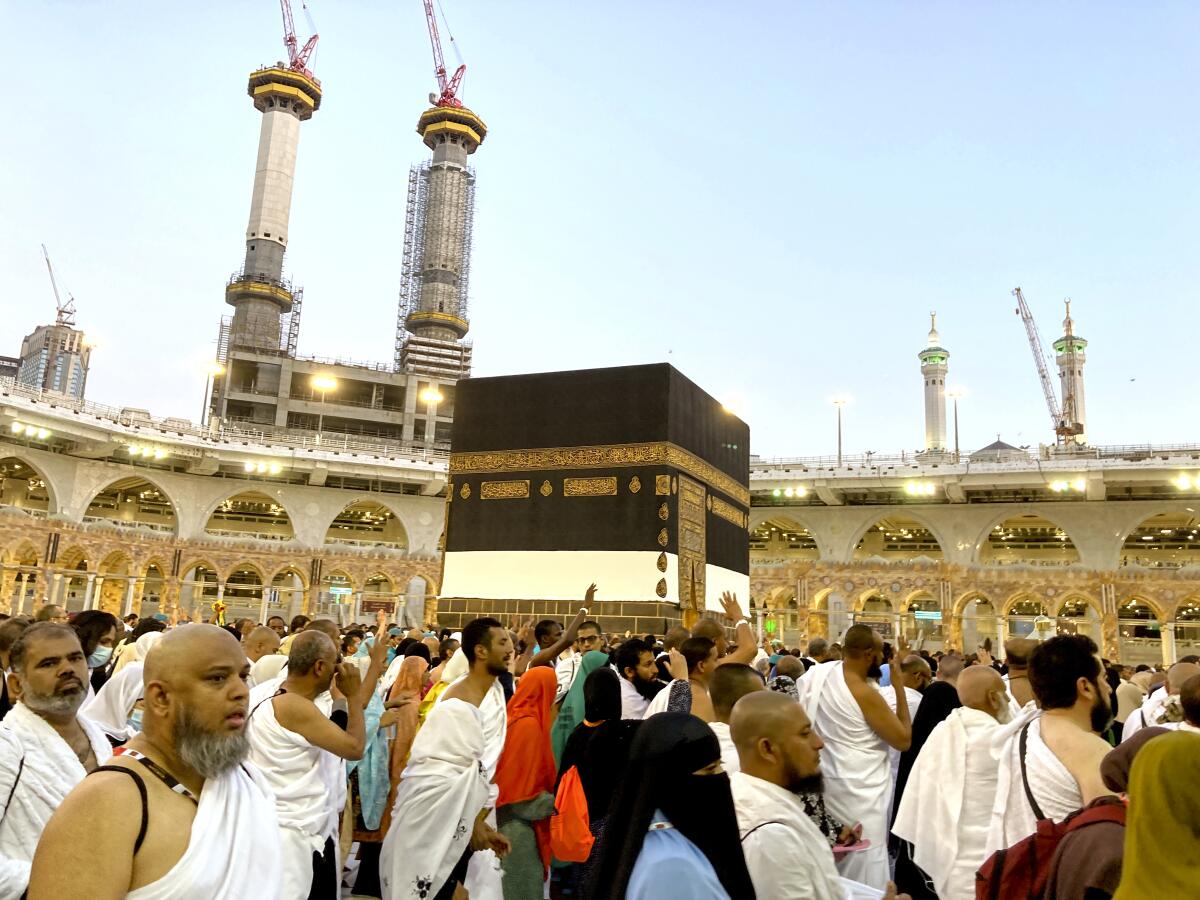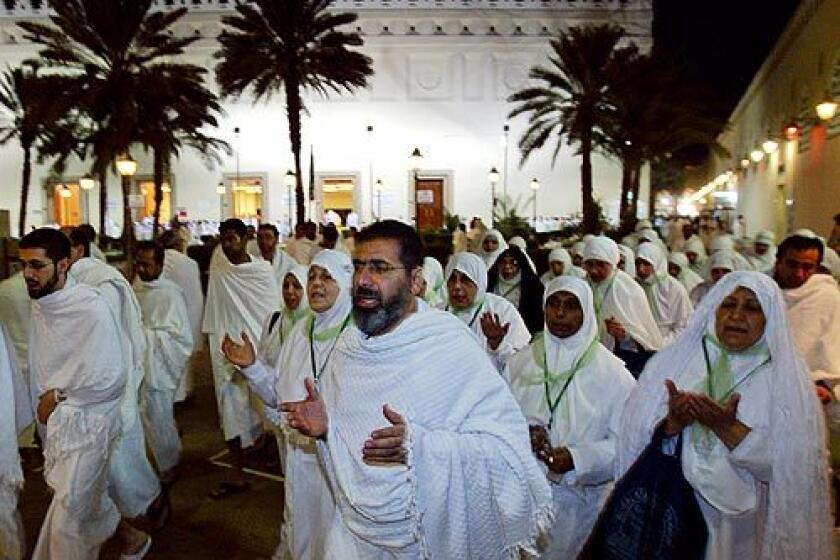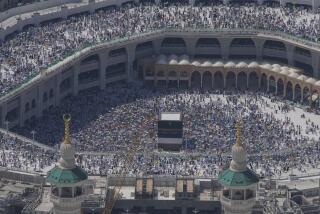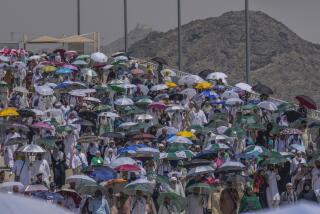Saudi Arabia expects 1 million people in Mecca for largest hajj since pandemic struck

- Share via
MECCA, Saudi Arabia — One million Muslim pilgrims were converging on Saudi Arabia’s holy city of Mecca on Wednesday for the largest hajj since the COVID-19 pandemic severely curtailed access to one of Islam’s five pillars.
Saudi Arabia’s decision to allow some 850,000 Muslims from abroad to make the annual pilgrimage, which begins Thursday, marks a major step toward normality after two years of a drastically scaled-down hajj restricted to Saudi residents.
The 1 million foreign and domestic pilgrims participating are still far fewer than the 2.5 million Muslims who traveled to Mecca in 2019 for the pilgrimage, typically one of the world’s largest gatherings. Those performing the ritual this year must be under 65, vaccinated against COVID-19 and have tested negative for the coronavirus within 72 hours of travel. The pilgrims are chosen from millions of applicants through an online lottery system.
Saudi officials inspected the holy site Wednesday and stressed their readiness to receive pilgrims with the goal of “maintaining public health.”
After the pandemic struck in 2020, Saudi authorities allowed just 1,000 pilgrims already residing in the kingdom to attend, prompting historians to compare the disruption to the site’s storming by religious extremists and dramatic closure in 1979.
Last year, the hajj was similarly restricted to 60,000 fully vaccinated Muslims living in Saudi Arabia. The unprecedented curbs sent shock waves throughout the Muslim world, devastating many believers who had spent years saving up for the religious rite.
With this year’s pilgrimage to Mecca restricted to a mere 1,000 participants, app developers have created ways to experience the hajj virtually.
This year, however, Saudi authorities are keen to relax coronavirus curbs. Religious pilgrimages brought in $12 billion before the pandemic — accounting for the largest percentage of Saudi Arabia’s gross domestic product after oil.
Although virus cases have risen steadily to more than 500 a day in Saudi Arabia, the government lifted the country’s indoor mask mandate and other precautions last month. Roughly 70% of the population has been vaccinated against the virus.
Pilgrims at the holy site this year are not required to be masked or socially distanced, as they were during the last two years. However, Muslims are still prohibited from kissing or touching the cube-shaped Kaaba, the metaphorical house of God at the center of Mecca that pilgrims circle as they complete the hajj.
The Quran says that all Islam’s followers who are physically and financially able should make the pilgrimage once in their lifetime. Pilgrims travel to Mecca from all over the world for five intense days of worship, carrying out a series of rituals.
The hajj follows a route that the Prophet Muhammad walked nearly 1,400 years ago and is believed to trace the footsteps of the prophets Ibrahim and Ismail, or Abraham and Ishmael, as they are named in the Bible.
More to Read
Sign up for Essential California
The most important California stories and recommendations in your inbox every morning.
You may occasionally receive promotional content from the Los Angeles Times.











